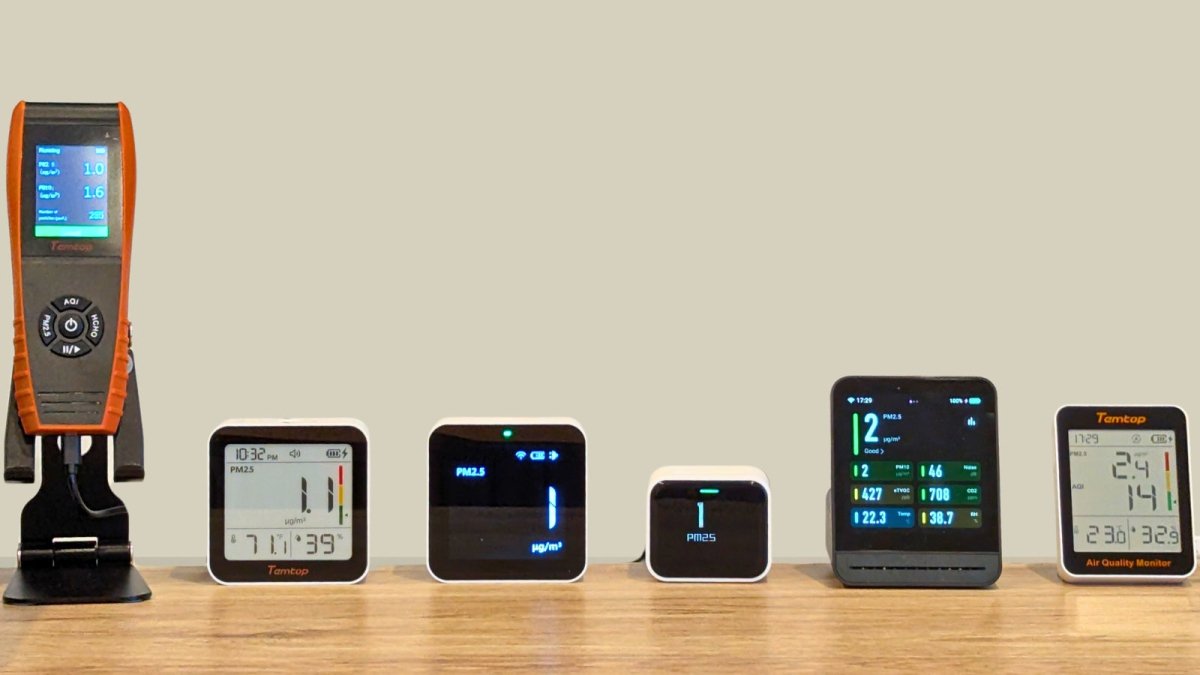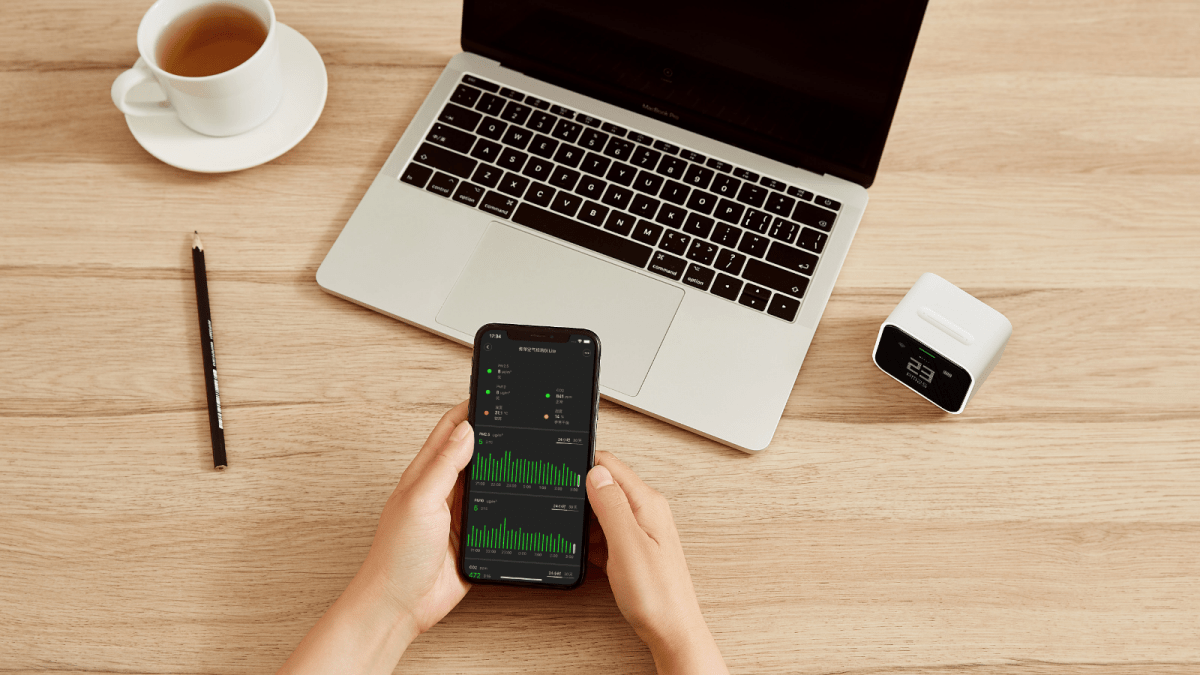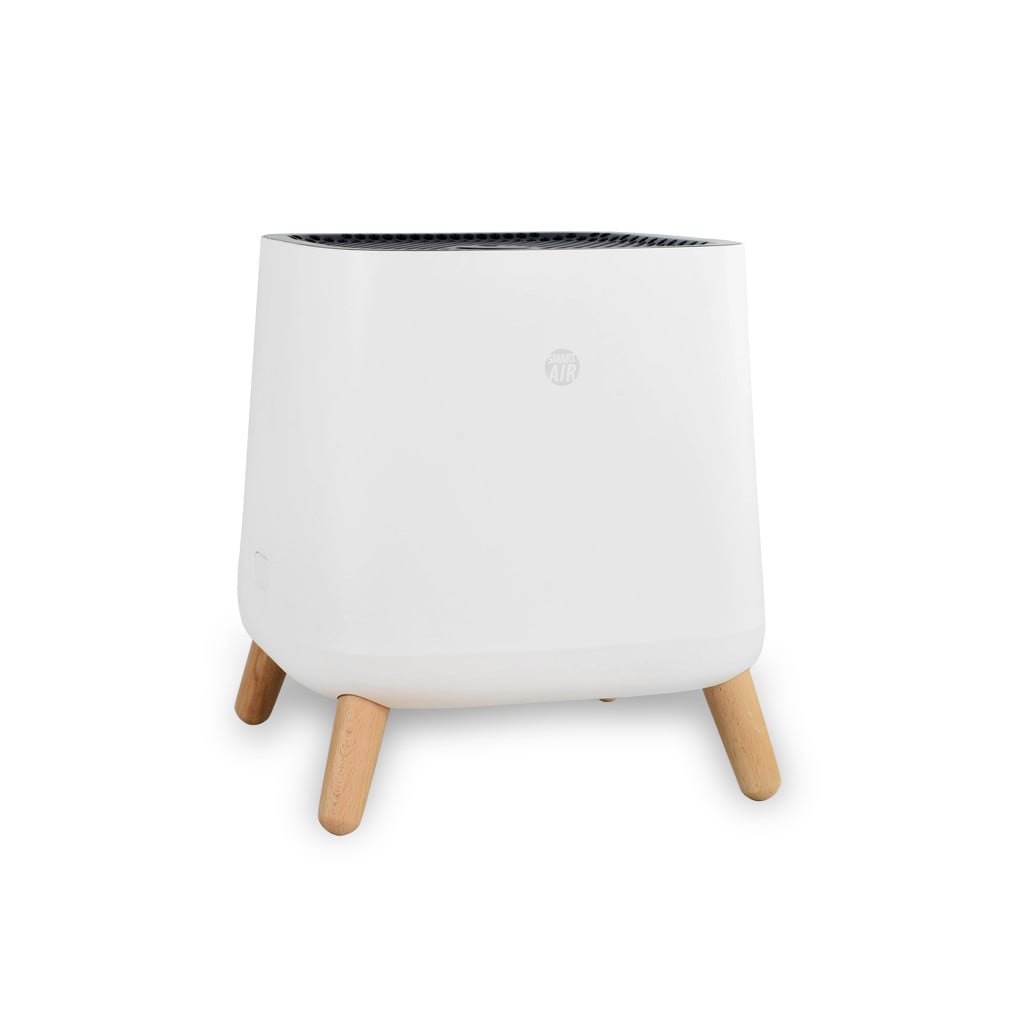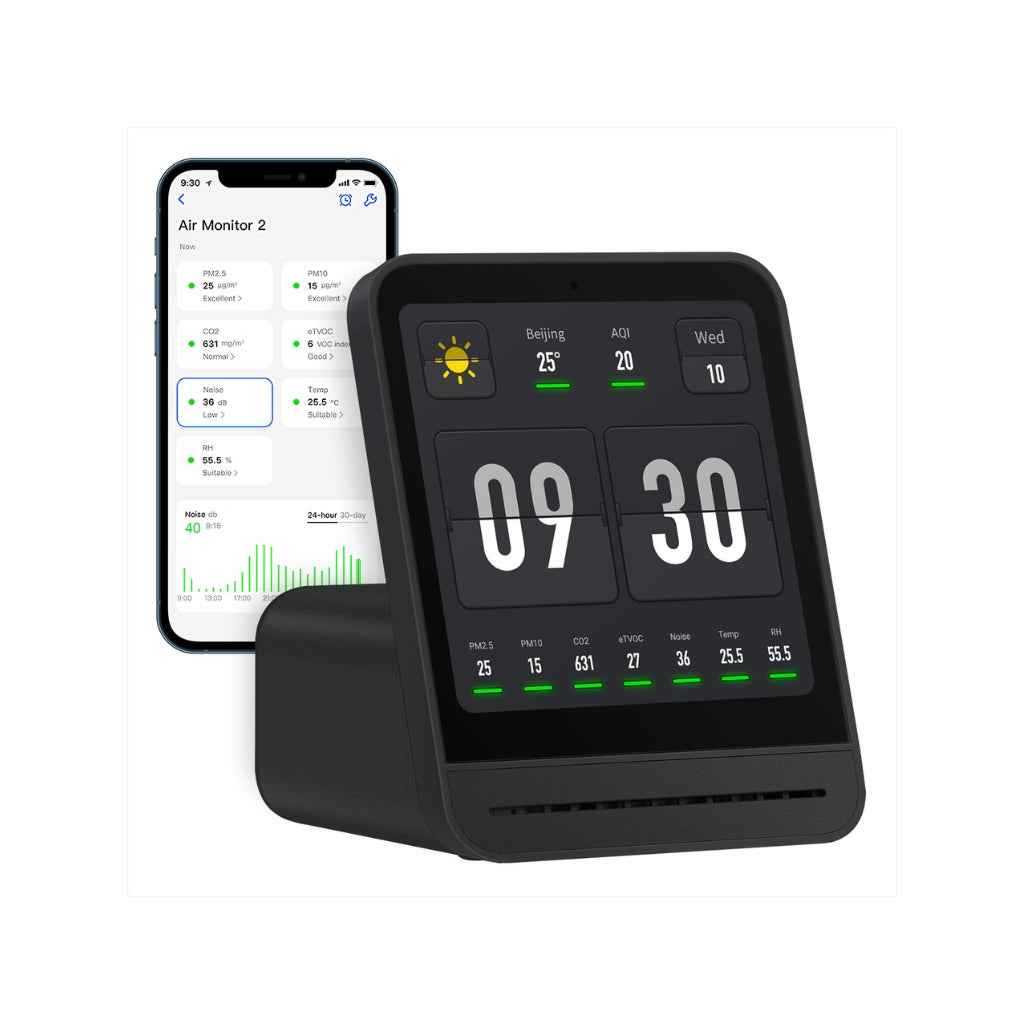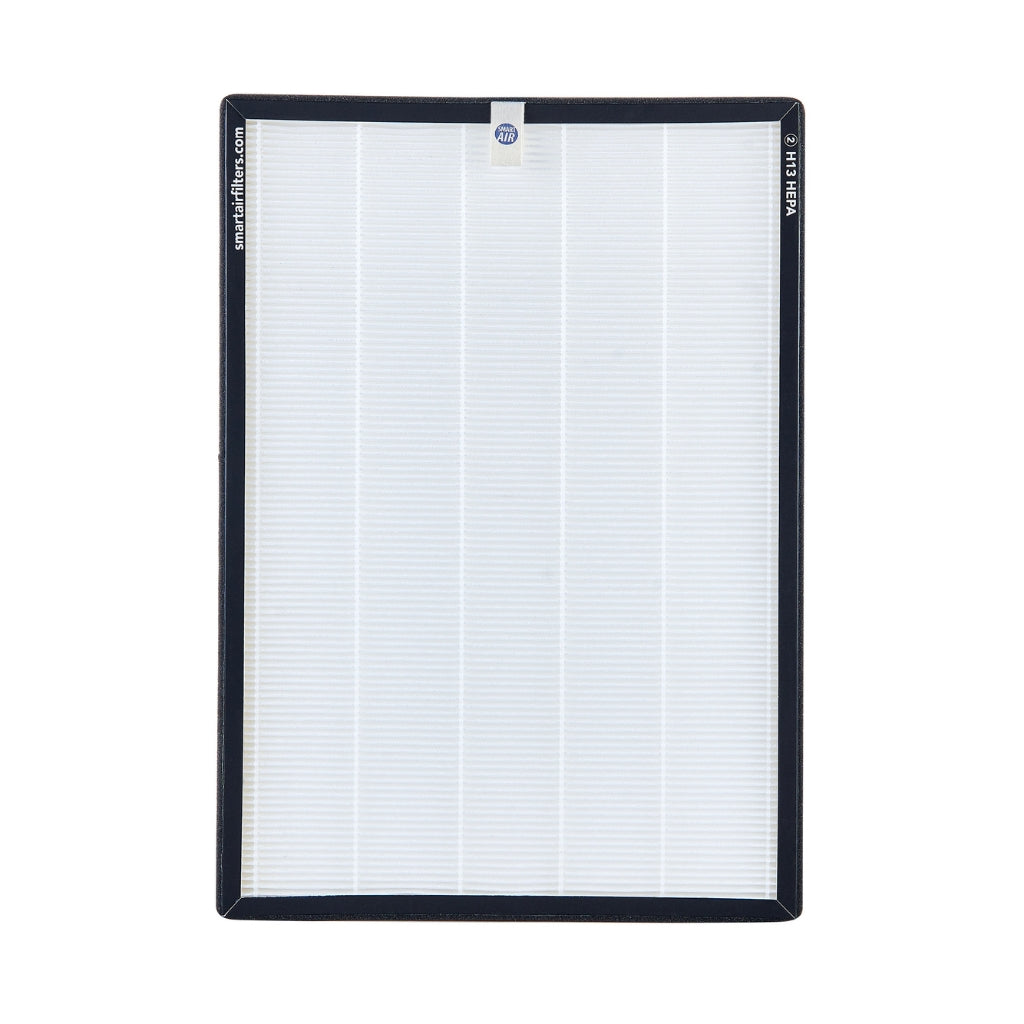This is our third year running this nationwide comparison, now updated for 2025. Over that time, we’ve seen plenty of air purifiers come and go - often from brands where air quality isn’t their main focus. Some even vanish entirely, leaving users without replacement filters.
That’s why we refresh this guide each year: to show which models are properly supported in New Zealand, how they actually perform, and which ones deliver the best value for clean air.
Table of contents
1. How We Compare Purifiers 2. Comparison Analysis (2025) 3. Budget Air Purifiers Under $300 (for smaller spaces, up to ~40m²) 4. Air Purifiers $300 to $500 in New Zealand (for medium spaces, up to ~60m²) 5. Air Purifiers for larger spaces under $1000 in New Zealand (Up to ~85m²) 6. Large & Commercial Air Purifiers over $1000 in New Zealand (Up to ~130m²) 7. Summary: What We Learned From the Comparisons 8. How We Source and Verify the Data 9. Why Can You Trust This guide? 10. Why you can’t trust every “Best Of” list 11. Features That Don't Add Real Value 12. Final Thoughts
1. How We Compare Purifiers
We focus on the two figures that matter most: Clean Air Delivery Rate (CADR) and noise (dB).
💨CADR measures how much clean air a purifier produces each hour. The higher the number, the faster it cleans and the larger the space it can handle. We use this figure because manufacturer recommended room sizes are often inaccurate.
🎶Noise tells you how comfortable it is to live with. We use maximum noise levels for fair comparison, rather than the quiet “sleep-mode” numbers that hide reduced airflow.
As a guide:
<50 dB - relatively quiet for daytime use, fine in living areas but still very noticeable at night
50–54 dB - modest background noise, upper limit for comfortable indoor environments
55–59 dB - similar to normal conversation, very noticeable if close by
60+ dB - loud and disruptive, best avoided for long periods
Together, these two metrics give the clearest picture of real-world performance: how quickly a purifier cleans the air and how comfortably it does it.
2. Comparison Analysis (2025)
Our latest update shows a clear pattern: price doesn’t always equal performance.
Some premium models look impressive but move surprisingly little air, while several affordable purifiers outperform nearly everything in their range.
Let’s start with the best air purifiers under $300 - where quiet, efficient performance matters.
3. Budget Air Purifiers Under $300 (for smaller spaces, up to ~40m²)
This category is aimed at bedrooms, nurseries, and smaller living areas/apartments. This is for those wanting quiet, effective air cleaning without spending a fortune.
We assessed 12 models from brands such as Breathing Better, Sunbeam, Breville, TruSens and more.
🏆 Best Overall: Smart Air Sqair
📊 Key Stats:
CADR: 315 m³/h (>50% higher than competitors)
Noise: 23–52dB (on low, whisper-quiet)
Room coverage: Cleans a 43 m² room in just 20 minutes
Price: $299.99
👍 Why we like it:
The Sqair delivers the most clean air for your dollar - more than any purifier under $300 in New Zealand. Its H12 HEPA filter has a large 1.5 m² surface area (around 22 A4 pages), giving excellent capture efficiency for smoke, dust, pollen, and pet dander.
It’s also 7–12dB quieter than its nearest rivals, making it ideal for bedrooms or nurseries where silence matters.
And because it relies purely on proven HEPA + Carbon filtration (no ionisers, no ozone), it’s a safe, science-based choice for households with respiratory concerns or young children.
Shop Smart Air Sqair
🔍 How It Compares
Brand
Model
Max CADR
Max Noise
Price
Smart Air
The Sqair
315m³/hr
52dB
$299.99
Sunbeam
Fresh Protect*
193m³/hr*
59dB
$248.00
Trusens
Z2000
190m³/hr
64dB
$229.00
Breville
The Easy Connect
91m³/hr
60dB
$270.00
* This purifier includes an ioniser/plasma function which may inflate CADR figures.
Graph 1: Air purifiers under $300 in NZ (price vs max noise vs CADR).
4. Air Purifiers $300 to $500 in New Zealand (for medium spaces, up to ~60m²)
This range suits medium-sized living rooms, apartments, and shared spaces where you want strong air cleaning without excess noise.
We compared 14 models from brands like Daikin, Shark, Winix, Breville, Xiaomi, TruSens and more.
🏆 Best Overall: Smart Air SA600
📊 Key Stats:
CADR: 500 m³/h, equal to the highest in this bracket
Noise: 16 – 51dB (quietest in class)
Room coverage: Cleans a 60 m² room in just 18 minutes
Price: $439.99
👍 Why we like it:
The Smart Air SA600 packs big-room performance into a compact, low-noise design. Its dual-inlet setup and twin H13 HEPA + carbon filters deliver clean air more efficiently than purifiers twice its price. It matches the top CADR of the Xiaomi Pro 4 but runs up to 13dB quieter, making it much more comfortable for everyday use.
Unlike many competitors that rely on ionisers to boost their CADR, the SA600 uses straightforward science. That's a powerful fan and real filters for reliable, safe air cleaning. Add its “Do Not Disturb” mode to avoid lights and child lock, and you get a purifier perfect for the bedroom, living area or office.
Shop Smart Air SA600
🔍 How It Compares
Brand
Model
Max CADR
Max Noise
Price
Smart Air
SA600
500m³/hr
51dB
$439.99
Xiaomi*
Pro 4 Smart Air*
500m³/hr*
64dB
$400.00
Xiaomi*
4 Smart Air*
400m³/hr*
63dB
$325.00
Shark
NeverChage 5
165m³/hr
55dB
$350.00
* This purifier includes an ioniser/plasma function which may inflate CADR figures.
Graph 2: Air Purifiers $300- $500 in NZ (Price vs max noise vs CADR).
5. Air Purifiers for larger spaces under $1000 in New Zealand (Up to ~85m²)
When you’re dealing with large living areas, classrooms, clinics, or open-plan apartments, you need serious airflow without the jet-engine noise.
We assessed 15 models in 2025 from brands like Sharp, Daikin, Oransi, Winix, Mitsubishi, Breville and Dyson. Performance varied dramatically - some delivered genuine whole-room cleaning, others struggled despite premium pricing.
🏆 Best Overall: Smart Air Blast Mini Mk II
📊 Key Stats:
CADR: 740 m³/h highest in its class
Room coverage: Cleans 85 m² in just 17 minutes
Noise: 49dB max, quietest among large-space units
Price: $799.99
👍 Why we like it:
The Blast Mini Mk II is built for genuinely big rooms. Its massive airflow and large H13 HEPA + optional carbon filter give it the power to handle living rooms, classrooms, or open offices with ease, all while staying impressively quiet.
At just 49dB on high, it’s quieter than many smaller purifiers. Smart Air’s “fan + filter, no gimmicks” approach means there are no ionisers, plasma emitters, or inflated “air quality modes” - just straightforward, high-volume HEPA filtration that works.
Shop Smart Air Blast Mini
🔍 How It Compares
Brand
Model
Max CADR
Max Noise
Price
Smart Air
Blast Mini Mk II
740m³/hr
49dB
$799.99
Oransi
Mod Hepa
574m³/hr
49dB
$850.00
Mitsubishi
ElitePure
508m³/hr
55dB
$520.00
Dyson
Pure Hot+Cool HP03
113m³/hr
62dB
$899.00
Graph 3: Air purifiers $500 - $999 in New Zealand (price vs max noise vs CADR).
6. Large & Commercial Air Purifiers over $1000 in New Zealand (Up to ~130m²)
This category covers large homes, gyms, clinics, classrooms, and shared spaces - anywhere serious clean-air output is needed.
We tested 15 models from brands such as IQAir, Trusens, Dyson, Breathing Better and Fellowes. Prices vary widely, and as with other categories, price doesn’t always equal performance or quietness.
🏆 Best Overall: Smart Air Blast Mk II
📊 Key Stats:
CADR: 950 m³/h, highest in New Zealand
Room coverage: Cleans 130 m² in 21 minutes
Noise: Just 43 dB, the quietest large unit around
Price: $1,100
👍 Why we like it:
The Blast Mk II delivers industrial-level performance in a package that’s surprisingly quiet.
At 950 m³/h CADR, it outperforms or matches high-end purifiers costing several times more - while running at only 43 dB, about the sound of a quiet conversation.
It’s built around Smart Air’s no-nonsense principle: massive HEPA surface area, high airflow, and zero gimmicks
With H13 HEPA and optional carbon filtration, it’s ideal for schools, fitness studios, or any environment where dependable, high-volume clean air is needed without the distraction of fan noise.
Shop Smart Air Blast
🔍 How It Compares
Brand
Model
Max CADR
Max Noise
Price
Smart Air
Blast Mk II
950m³/hr
43dB
$1100
Trusens
Z7000
930m³/hr
66dB
$1830
Trusens
Z6000
880m³/hr
63dB
$1700
IQAir
CleanZone SL
820m³/hr
56dB
$11,500
Breathing Better*
X-Large Room Purifier*
800m³/hr
70dB
$1499
I-Air
Pro Air Healer
600m³/hr
61dB
$12,883
Dyson
Purifier Hot + Cool
311m³/hr
62dB
$1099
* This purifier includes an ioniser/plasma function which may inflate CADR figures.
The Smart Air Blast Mk II pairs immense airflow with unmatched quietness, achieving what most large-space purifiers can’t: power and comfort in the same package.
The Trusens Z7000 comes close in airflow but runs over 20 dB louder, while the IQAir focuses on the high end with specialised carbon filtration and an big price tags.
At the opposite end, Dyson’s premium Hot + Cool series delivers less than a third of the airflow at very high noise levels - proof that sleek design doesn’t equal clean air.
Graph 4: Air Purifiers $1000+ in New Zealand (price vs max noise vs CADR).
7. Summary: What We Learned From the Comparisons
After analysing nearly every purifier available in New Zealand, one trend is clear: the best-performing units aren’t always the most expensive.
Across all categories, CADR and noise tell the real story. Some premium models look sleek but move little air, while smaller specialist brands often deliver far higher performance for their price.
The purifiers that consistently stand out combine:
High CADR – lots of clean air, fast
Low noise – quiet enough for daily use
Reliable filter support – parts readily available in NZ
8. How We Source and Verify the Data
We’ve made every effort to ensure the numbers here are accurate and up to date, but air purifier data can be patchy. Some brands don’t publish CADR or noise levels at all (we’re looking at you Dyson and Shark), or publish only partial figures.
Here’s the approach we use, for all purifiers we find available in New Zealand:
Manufacturer or retailer specs - when CADR and noise levels are published clearly.
EnergyStar database - where CADR is independently verified.
Independent tester reviews (e.g. Housefresh, Rtings) when official data isn’t available.
If no reliable CADR data can be found, we exclude the model.
That’s why this guide shows every purifier in NZ with verifiable performance data. While we’ve double-checked everything, there may still be small differences between sources.
9. Why Can You Trust This guide?
The internet is full of “Top 10 Air Purifiers” and “Best Purifiers for Dust” lists - even from well-known outlets. Unfortunately, many are built to generate commission, not to give you the best advice.
We want to be upfront: yes, we are selling some of the purifiers in this guide. But unlike affiliate-driven lists, our business depends on you being satisfied years down the track. That means filters being available, performance matching the claims, and you getting genuine value.
That's why we aren't just telling you which are the best, we're showing you the data so you can make an informed decision.
10. Why you can’t trust every “Best Of” list
To show what we mean: in 2024, the NZ Herald published their “Best Air Purifiers in New Zealand” picks. The problems? Many. It was clear this was written by someone (or AI) with no knowledge of air purifiers. They included models with poor clean air performance, no filters available and unsupported models drop shipped from overseas. Their reason for publishing isn’t to inform you, it’s to earn commission on the products they list.
We broke this down in detail here:
It's a good reminder that while these lists look authoritative, they don't hold up when you check the numbers.
Our aim is different: to compare all models where data exists, show how they stack up, and make it transparent why certain units come out ahead.
11. Features That Don't Add Real Value
When shopping around you’ll see lots of air purifiers with added bells and whistles. Some of these aren’t just unnecessary, they can be unhelpful or even harmful:
Ionisers / Negative ion generators - can create ozone and just push particles onto surfaces instead of removing them. These are used to improve CADR figures, without filtering out particulates.
UV lights - sound impressive, but don’t get enough contact time to work in fast-moving air. HEPA filters already capture these particles.
Auto sensors - often cheap, inaccurate and misleading. We recommend a separate, accurate monitor if you want to track your indoor air properly.
👉 For a full breakdown, see our article: What features matter when choosing an air purifier.
12. Final Thoughts
This guide compares nearly every purifier currently sold in New Zealand, from compact bedroom models to large commercial systems.
Whatever your space, the same principles apply:
Focus on CADR and noise, not gimmicks
Make sure filters are available locally
Choose a model that matches your room size and how you’ll use it
👉 Still not sure which model fits your space? Take our 60-second quiz or browse our full range to find the best value purifiers available in New Zealand today.
FAQs
What actually makes one air purifier better than another?
In practice, it comes down to airflow (CADR), filter quality, and how quietly the unit can deliver that airflow. Extra features can be nice to have, but they don’t usually improve real-world air cleaning.
Is a more expensive air purifier always better?
Not necessarily. Price often reflects extra features, branding, or app connectivity rather than better filtration. A simpler purifier with strong CADR and a good HEPA filter can outperform more expensive models that prioritise features over airflow.
How do I know if a purifier is powerful enough for my room?
A good rule of thumb is to aim for at least 3 air changes per hour. You can estimate the required CADR by multiplying your room size (m²) by around 7.5. Many advertised “room size” claims don’t meet this threshold in real use.
Do air purifiers help with allergies, smoke, and dust?
Yes, a properly sized HEPA air purifier can significantly reduce airborne particles like dust, pollen, smoke, and PM2.5. Results depend on room size, placement, and running the purifier consistently.
Why do different purifiers list very different room sizes?
There’s no single standard for room size ratings. Some brands assume very low air change rates or use boosted test results. Comparing purifiers by CADR rather than room size gives a more accurate picture.
What’s a sensible choice for most NZ homes?
For most households, a purifier that balances strong CADR, low noise, and simple HEPA-based filtration is the most practical choice, especially if it can scale up for living spaces and run quietly in bedrooms.
Relevant Articles:
What features matter when choosing an Air Purifier (NZ Guide)
Read more
Ionisers Explained: Why We Don’t Use Them (and Why Some Brands Do)
Read more
The Misleading Room Size Claims of Air Purifier Brands
Read more






